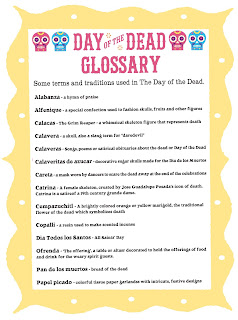-->
~~ Periods 2, 3, 5, 6 ~ US History
The New Nation – Constitution
* 8.2. Students analyze the
political principles underlying the U.S. Constitution and compare the
enumerated and implied powers of the federal government
8.2.2 - Analyze the Articles of Confederation and
the Constitution and success of each in implementing the ideals of the
declaration of Independence
8.2.6 - Enumerate the powers of government set
forth in the Constitution and the fundamental liberties ensured by the Bill
Rights
8.2.4 – Federalist and Anti-Federalist
*** History - Have the students reread chapter 8
and make a timeline due on Wednesday
Search and find
(Images) the Strengths and Weaknesses of the US Constitution (IN YOUR OWN
WORDS)
Search and find
(Images) ~ Compare and Contrast the Articles of Confederation vs the US
Constitution (with the Bill of Rights) [Venn diagram/Comparison Chart] (IN YOUR
OWN WORDS)
Unit Question ~
Answer and Explain
“What type of
government was proposed in these documents:
Magna Carta, English Bill of Rights, Mayflower Compact, Declaration of
Independence, US Constitution with the Bill of Rights?”
Over this year ~ you will be Studying about our
country. The Life and Lives, the
Geography and Climate ~ Growth and Conflict
US HIsotry Framework: The eighth grade course of study begins
with an intensive review of the major ideas, issues, and events that shaped the
founding of the nation. In their study of this era, students will view American
history through the lens of a people who were trying—and are still trying—to
fulfill the promise of the Declaration of Independence and the Constitution.
Throughout their eighth grade United States history and geography course,
students will confront the themes of freedom, equality, and liberty and their
changing definitions over time. This course will also explore the geography of
place, movement, and region, starting with the Atlantic Seaboard and then
exploring American westward expansion and economic development, the Civil War
and Reconstruction, and finally, industrialization. Covering parts of three centuries, the
historical content outlined in this chapter is both substantial and
substantive, which poses a significant challenge for teachers, with limited
time for in-depth study. In order to address this challenge, this chapter is
organized into five large sections that incorporate relevant questions that can
help students understand how individual events and people comprise a larger
narrative explanation of our past.
As students learn American history from the late 1700s
through the end of the nineteenth century, they will develop reading, writing,
speaking, and listening skills that will enhance their understanding of the
content. As in earlier grades, students should be taught that history is an
investigative discipline, one that is continually reshaped based on
primary-source research and on new perspectives that can be uncovered. Students
should be encouraged to read multiple primary and secondary documents; to understand
multiple perspectives; to learn about how some things change over time and
others tend not to; and they should appreciate that each historical era has its
own context and it is up to the student of history to make sense of the past on
these terms and by asking questions about it.
History Focus in the Standards
CA HSS Analysis Skills (6-8 grades) research, evidence and
Point of View
CA CC SS for ELA/Literacy – RH 6-8.1, 2, 6, 8, 9, SL 8.4,
L.8.6
CA ELD Standard ELD.P.8.1, 6a, 6b, 7, 9, 11, ELD.P11.8.a
Mexican American -
-
Biography and Art Work of Diego Rivera
-
*** the elective -
have them finish their picture (Diego Rivera). They picked a picture and where
to make one similar to it with colors.
-
Day of the Dead
Create a skull mask (use cardboard
as your base)
Mandala’s
Create a Cultural Mandela (Find a pattern (very
detailed) for each of the cultures we will looked at this year. Hispanic, African American, Armenian, China,
Native American … any other you want – look up the patterns for each culture
and put them all together with lots of patterns and details in the design.
~~~~~~~~~~~~~~~~~~~~~~~~~~
CLASS EXPECTRATIONS ~~ ALL CLASSES
√ Let us Be Kind, Be Gentle, Show Care with the
Love ~ all the time.
In our class: ~~ Our
Agreements:
~ Safe ~~
~ Respect
~ Fun ~~
~ Focus
~ Learn ~~
~ Participate
Class
NORMS
* NO PASSES (ESPECIALLY BATHROOM AND GOING TO
ANOTHER CLASS TO GET SOMETHING THEY LEFT
* This is a safe place to learn
* Respect and Cooperate
* Presuming Positive Intention
* Raise your hand and wait to be called on
* Be a listener ready to learn
* Work quietly
* Quality ~ Quality ~ Quality counts
* As you enter the
room
~
Come in Genteelly (walk, come & sit-down)
~ Be
ready to
Learn
* NO ELECTRONIC DEVICES other than the IPads
* LEAVE TEACHER ITEMS/MATERIALS (EVERYTHING
IS MY STUFF) because the students should use their own supplies
* As you leave the room
~ Pick-up and clean up
before you leave (push your chair in – 6TH PUT UP YOUR CHAIRS)
To
Get Credit
* Turn Work in On Time
* Proper heading
* Neat work
* Clean paper
* Follow instructions
* Cursive Writing
* Write Problem/Questions
* ‘Draw – 5
colors
* “Own Words”
* Diagrams – labels and details
* Lined paper (no tear outs from notebooks)























No comments:
Post a Comment